How Organisations That Pivot To Product Outperform Their Peers By 4x
The challenging economic climate looks like it might be with us until at least 2026. Customers are holding onto their money. Organisations need to be able to respond more quickly to shifts in consumer demand and economic conditions and allocate resources more effectively to drive cost efficiencies.
Moving to a product-centric operating model, in which teams are aligned to specific products, is a key enabler of agility. Adopting this model can lead to better competitiveness and sustained growth. The 2023 State of Value Stream Management Report found that organisations that have pivoted to a product-centric operating model and have aligned their people to value streams are outperforming their peers by 4x1.
What are the important ingredients that distinguish a product-centric organisation design from a traditional organisation design? In our experience there are 4 key distinguishing features to a product-centric organisation design.
1. Align teams by outcomes not outputs (nor by function / capability / supplier)
Product-centric organisations arrange their teams by value streams, not by function. A value stream has end-to-end (E2E) accountability for both operational and change delivery. This means they have all the skills in the value stream to design, build, service and operate the product. Individuals within the value stream are close to the customer and have the accountable freedom (budgets and decision-making power) to organise themselves in the way they see fit, to ensure the structure works for them and they can appropriately adapt their product to customer needs.
Why organise by value stream? Companies that do so outperform their peers by 4x2. Organising by value stream enables companies to achieve faster delivery, higher quality, and higher customer satisfaction through:
- Optimising the customer journey and client experience.
- Teams having deep knowledge of the customer, products and systems.
- Organising teams to minimise handoffs and dependencies on others.
- Full accountability for quality and resilience.
- Combining operations and change, to operate E2E.
- Having all the skills in the team to deliver E2E solutions / outcomes.
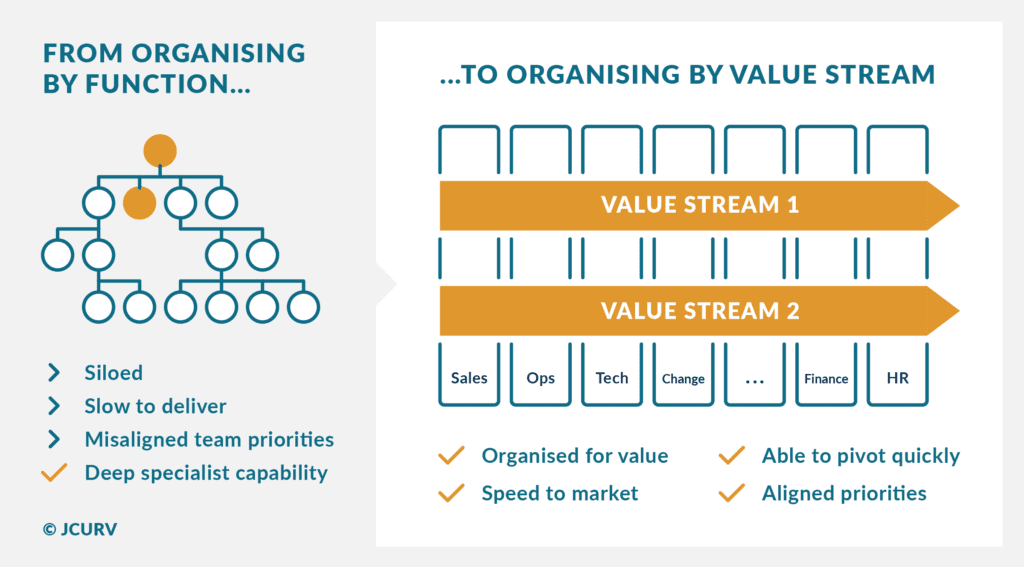
Figure 1: Organising people and the work by end-to-end Value Stream instead of by function
2. Design to remove dependencies and siloes
One of the biggest game changers is when dependencies and handoffs between teams are visualised, understood and removed. JCURV research has found that 90% of delays in organisations are typically caused by handoffs between teams and conflicting priorities.
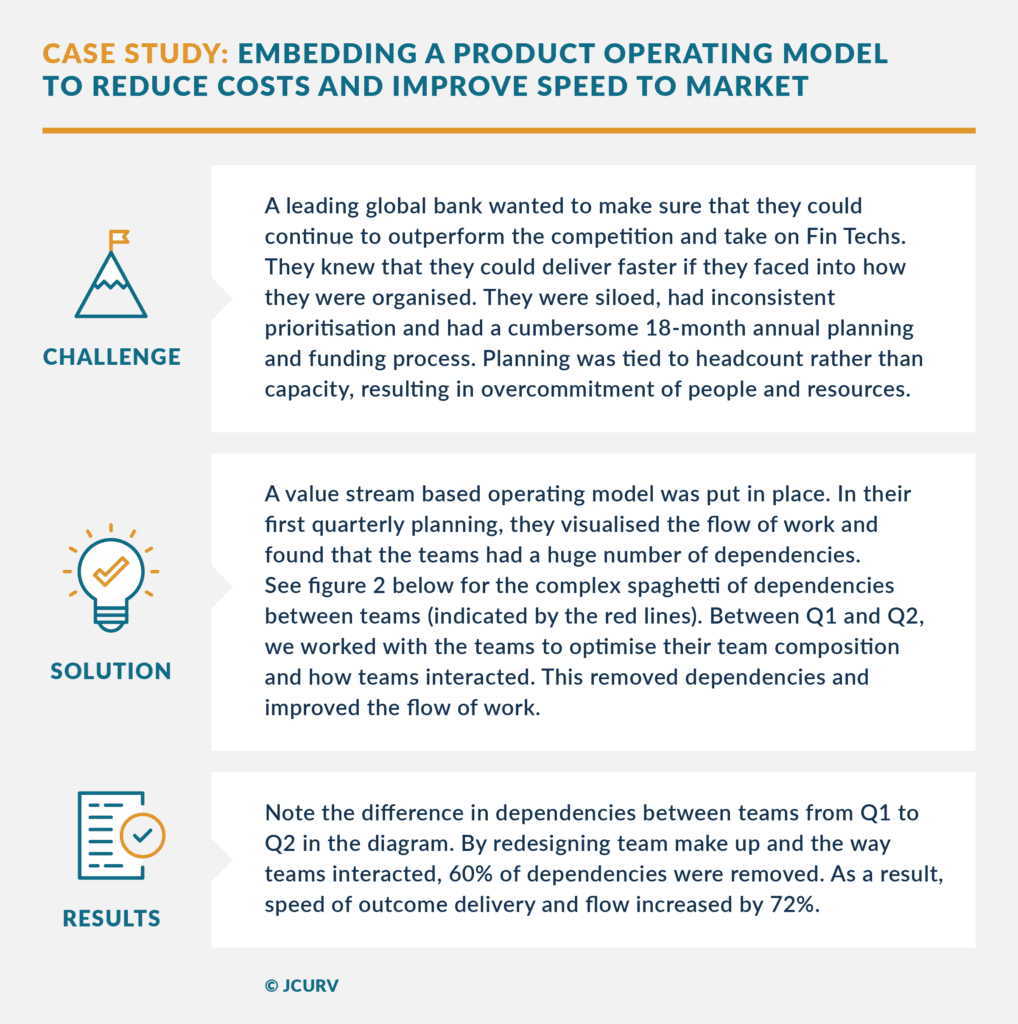
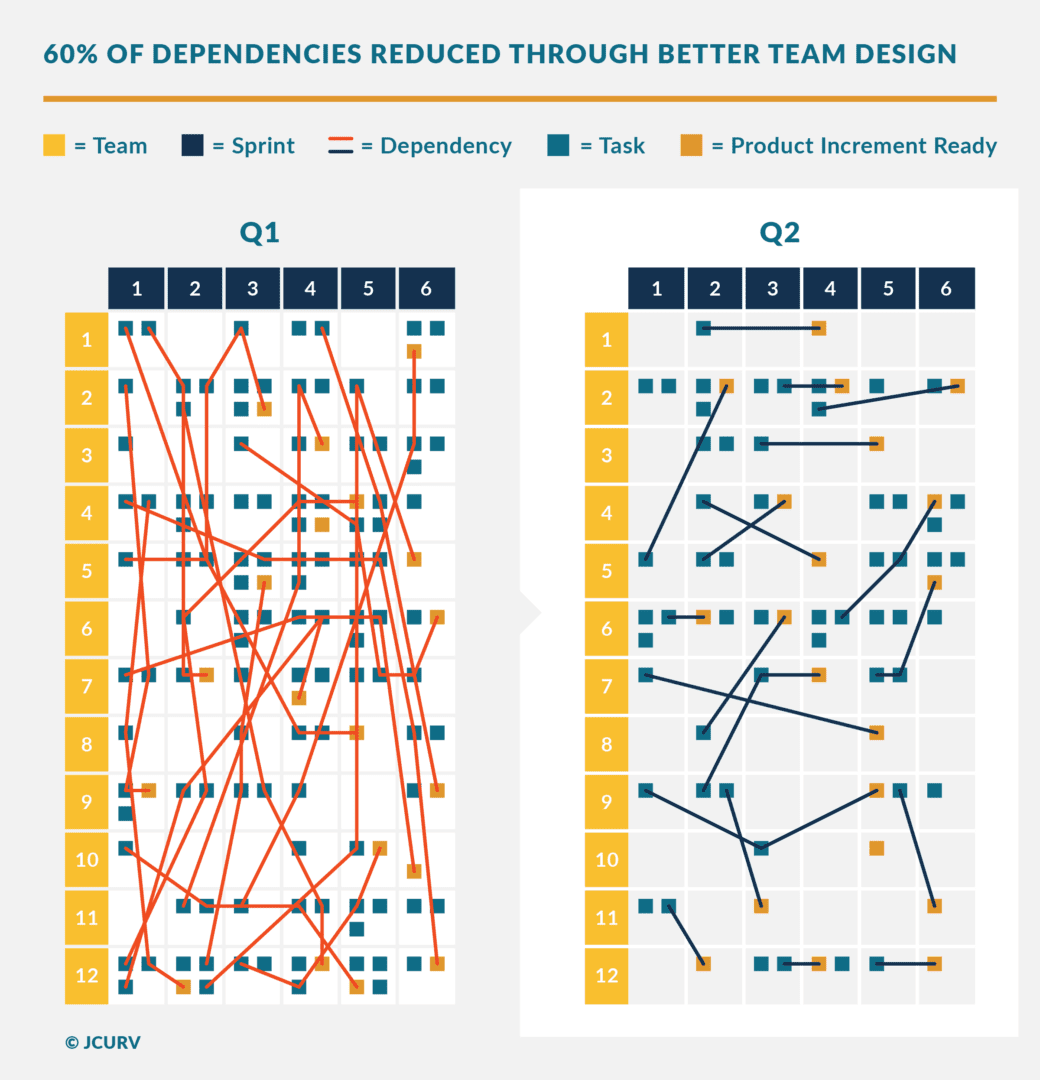
Figure 2: 60% of dependencies reduced through better team design between Q1 and Q2
3. Continually optimise your team design for fast flow of work
Organisations need a culture of continuously fine-tuning how teams work together to optimise the design for fast flow of work. Gone are the days of doing a big re-organisation every 18-24 months. Instead, organisations need to be continuously adapting and evolving their team design to be able to compete at pace and stay ahead of the competition. This is called designing for fast flow.
Organisations that do this are continuously reviewing their team make-up with the following questions in mind every three months as good practice:
1. Do we have all the skills in the product team to deliver the outcome?
2. How much context switching (multitasking) are the teams doing? How can we minimise their cognitive load and help them focus?
3. Do we have our team boundaries right?
5. Which teams need to collaborate together in the next quarter? Are their outcomes aligned?
4. If there is friction between teams? What can we do to remove this?
5. What is impeding the flow of work?
When looking at how product and value stream teams can work effectively with technology and platform teams, we found Team Topologies3 very useful as a framework for understand and optimising how teams work together.
4. Minimise your management overhead
Traditional programme and project constructs are costly to maintain. They typically require many people to support and manage the governance, reporting and cost accounting practices within the programme. We have found that traditional organisations have much lower producer to orchestrator ratios than product organisations as they require many more middle managers and project managers to get things done. In some cases, the ratio was as low as 40:60 producer to orchestrator. This dramatically impacted their speed to market.
Organisations we’ve worked with that have made the shift from project to product have typically found the optimum producer to orchestrator ratio to be 85:15 within a value stream.
- Producer: An individual that is directly building, developing, or supporting value. Producers typically include product owners, customer experience and experience design specialists, technical engineers, developers, testers, business designers, customer facing roles, business subject matter specialists and operational support.
- Orchestrator: Anyone in a management, governance, administrative, risk, control, finance, reporting, or assurance role on a programme. They are not directly involved in producing customer or business value.
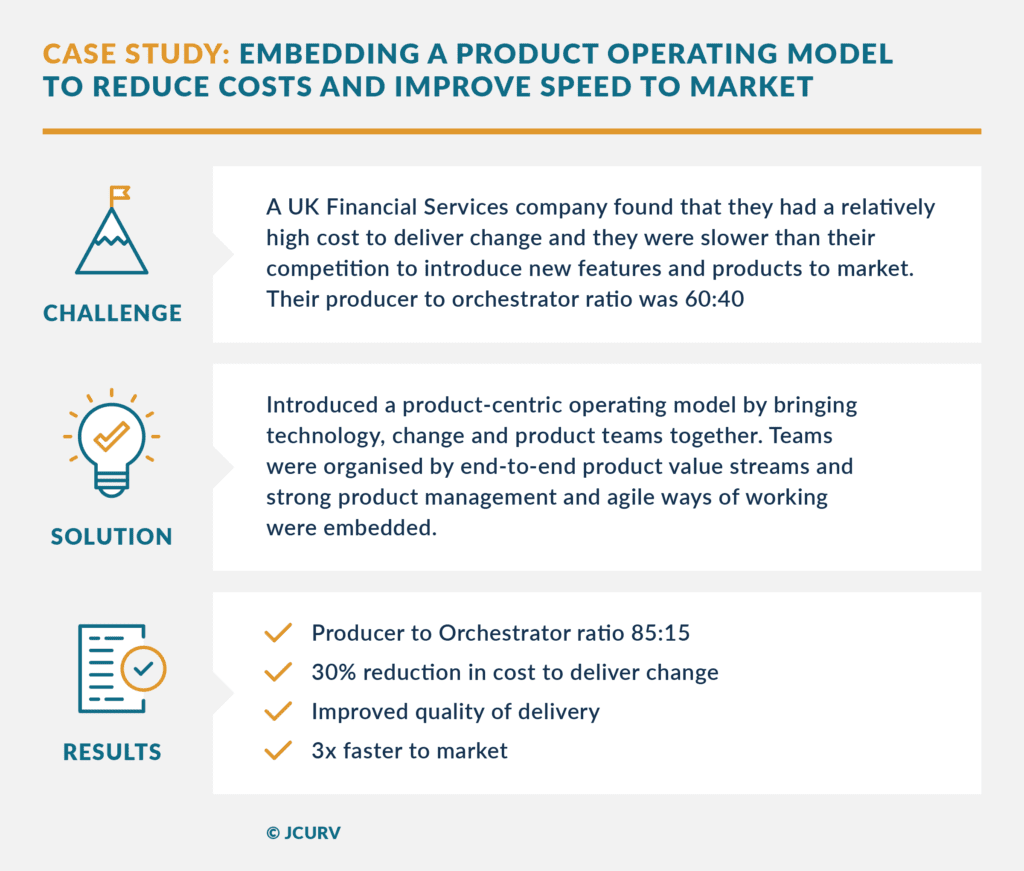
Where are most organisations on the journey to product?
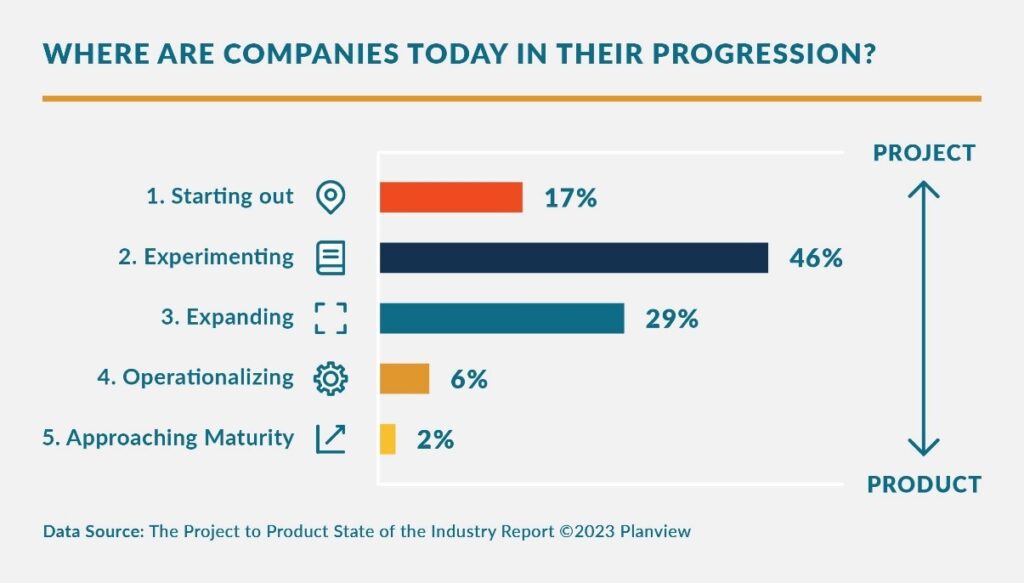
Despite their stated intention, most organisations are still in the early stages of transition from project to product and have yet to realise the return on investment from their efforts.
According to the most recent Project to Product State of the Industry Report, 63% of organisations are at the starting out or experimenting and early piloting stages of the shift from project to product. 29% are at the expanding stage and only 2% are at full maturity. This demonstrates that the pivot to product still needs significant focus.
Levers to pull to pivot to product
As we have shown, there are four key distinguishing features of a product-centric organisational design:
- First, organising teams by product value stream rather than function allows for faster delivery, higher quality, and enhanced customer satisfaction.
- Second, designing to remove dependencies streamlines workflows and significantly boosts productivity.
- Third, adopting a fluid organisational design that continuously optimises team interactions for a fast flow of work is essential.
- Finally, transitioning from a project to a product mindset, with a focus on high-producers over non-producers, proves to be a more efficient and lean approach.
These are four key ingredients to outperforming the competition. If you would like to find out more about product centric operating models, please contact us at JCURV.com.
If you are interested in reading more on the topic of product and product value stream operating models:
- How Organisations That Pivot to Product Outperform Their Peers By 4x
- Why Shift to Product?
- Where are you on your pivot to product journey?
- Mobilising Your First Value Stream
- The Power of the North Star Product Metric
Sources:
